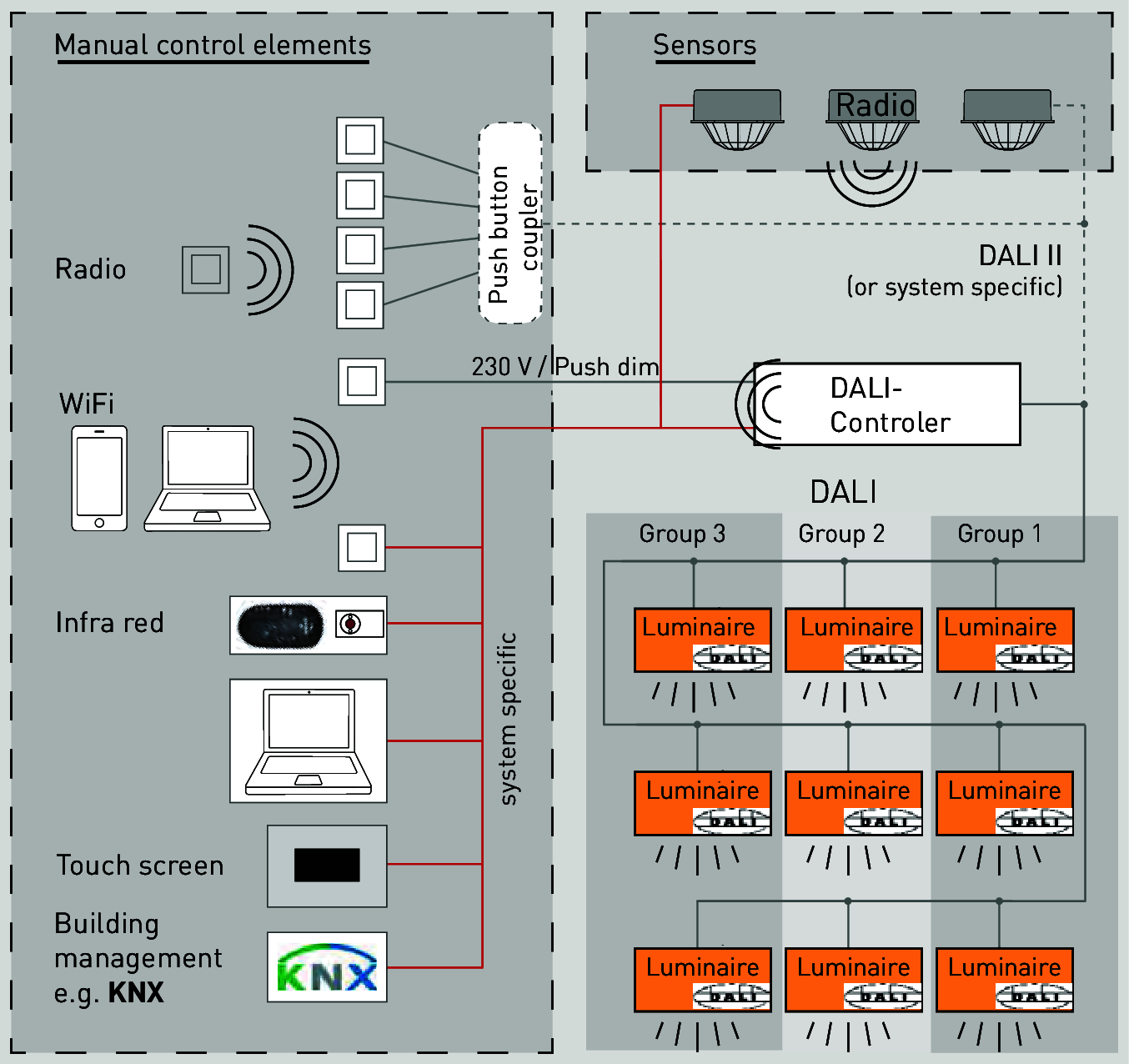Via DALI scan, the operating status of each participant and defects in light sources or control gear units can be scanned and submitted to the user via the control device as necessary.
The extent to which the aforementioned features can be used depends on the respective application.
In many cases, it is possible to assign up to 16 group addresses to the participants after assigning individual addresses. Individual addresses are assigned randomly and sometimes only required for separate luminaire call-up for group assignment purposes. However, the addressing procedure is not defined in the DALI standard. It can be executed in different manners. Depending on the control device used, the following approaches can be required:
i) The addressing of all control gear units is executed during commissioning of a control device as a matter of principle. Control devices not registered during commissioning will not be controlled. DALI commissioning of the complete lighting installation on-site is mandatory in such cases.
ii) Addressing is done using a separate DALI programming device. The control device does not provide an addressing procedure. This applies e.g. for simple control devices with unmodifiable, defined functions such as e.g. dimming DALI groups or calling up DALI scenes. Control gear units of this type often do not require individual commissioning. As the case may be, pre-programmed or pre-addressed luminaires can be used.
iii) Addressing can be done either during commissioning or using a separate addressing device. This often applies e.g. to control devices whose control functions are exclusively based on group commands and do not require individual addresses. In such cases, pre-addressed control gear units can also be used, so that on-site commissioning is not required. When compared to DALI and DMX interface, the DALI group address most closely resembles the DMX address. It allows the operation of several control gear units with one shared command. The most noticeable difference is in the number of addresses, which is not geared to the requirements of a stage show, but to those of work place lighting. On the other hand, with DALI interfaces, there is always the additional possibility of targeting luminaires individually as well as through a general broadcast command. The assignment of one control gear unit to several groups is also possible. With the new DALI-2 standard, sensors for light and presence detection as well as couplers for connecting push-buttons can also be connected to the DALI interface and be addressed. For these components, an additional 64 DALI addresses are available. The addressing systems of control gear units and control components are independent of each other. It may be required to consider the DALI control power required for control component operation with respect to the number of DALI participants that can be used.
